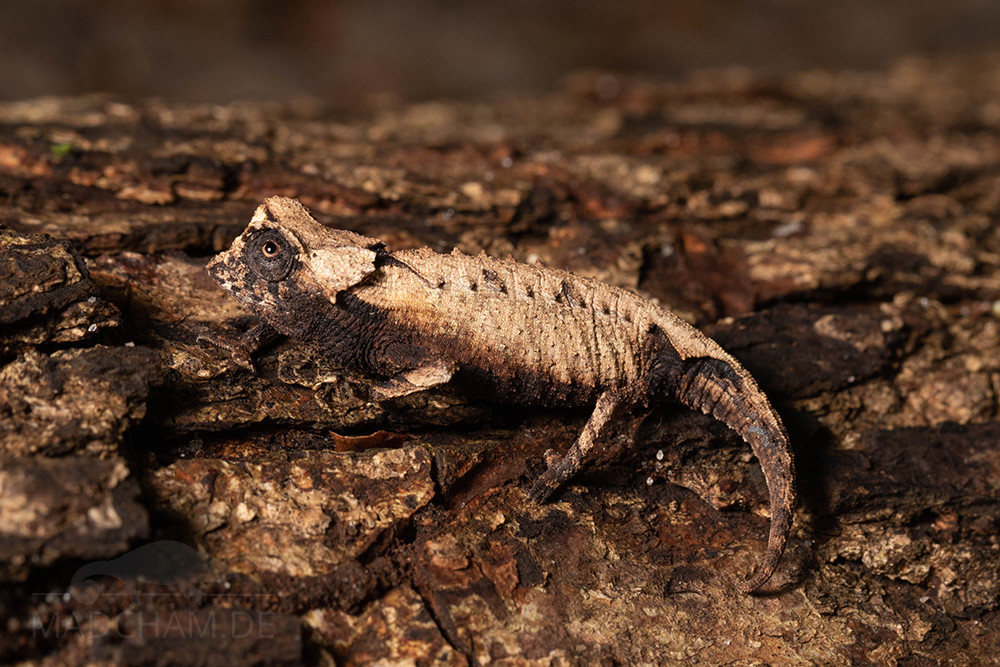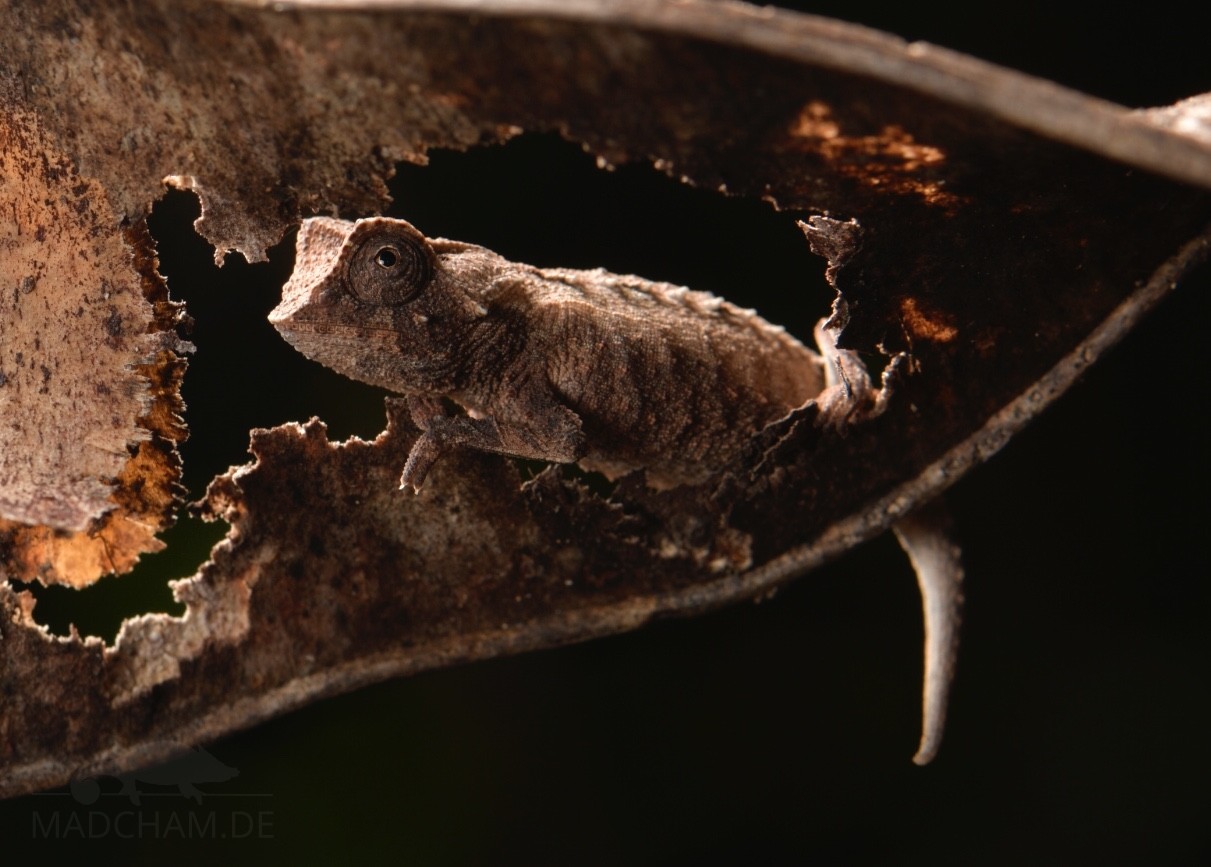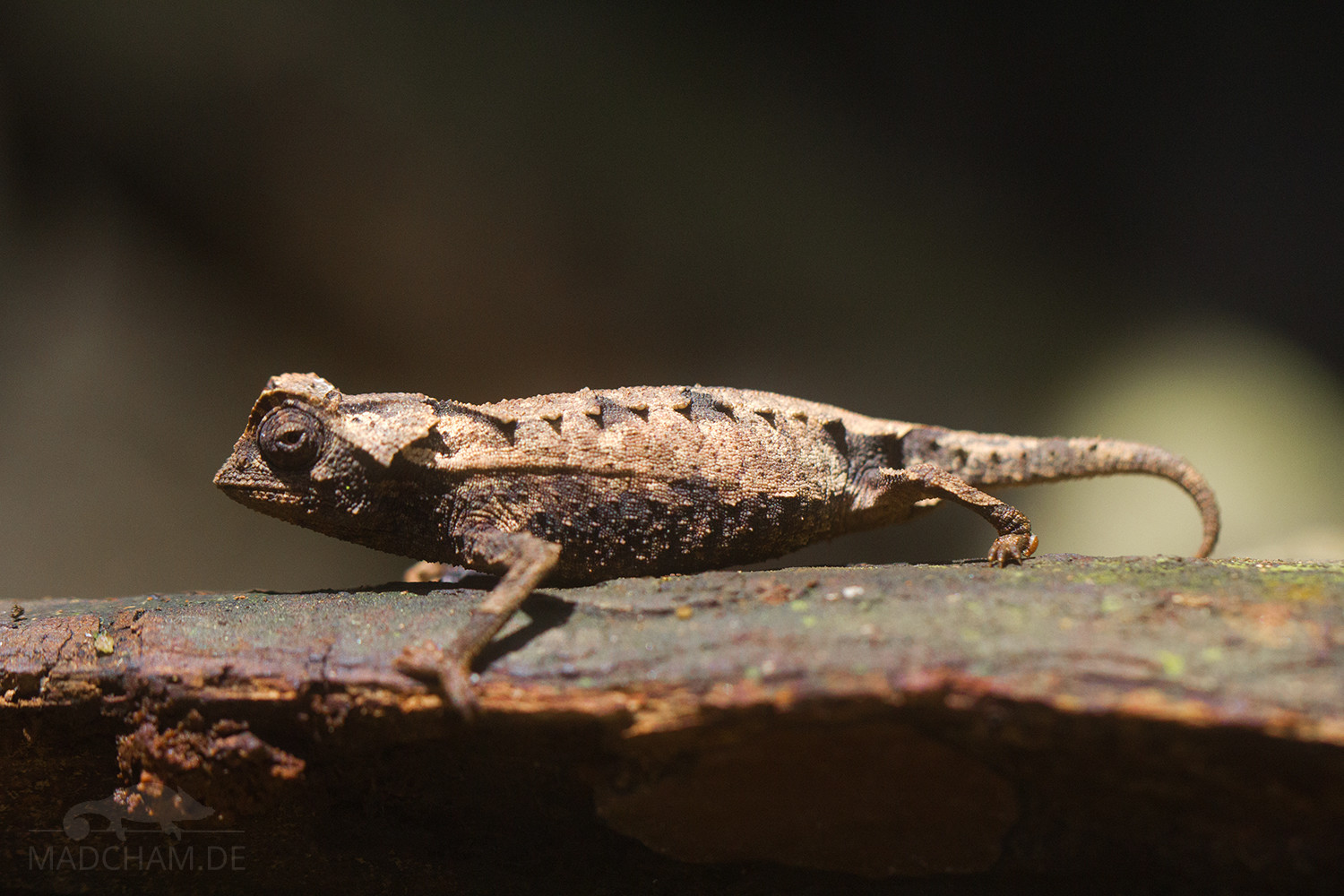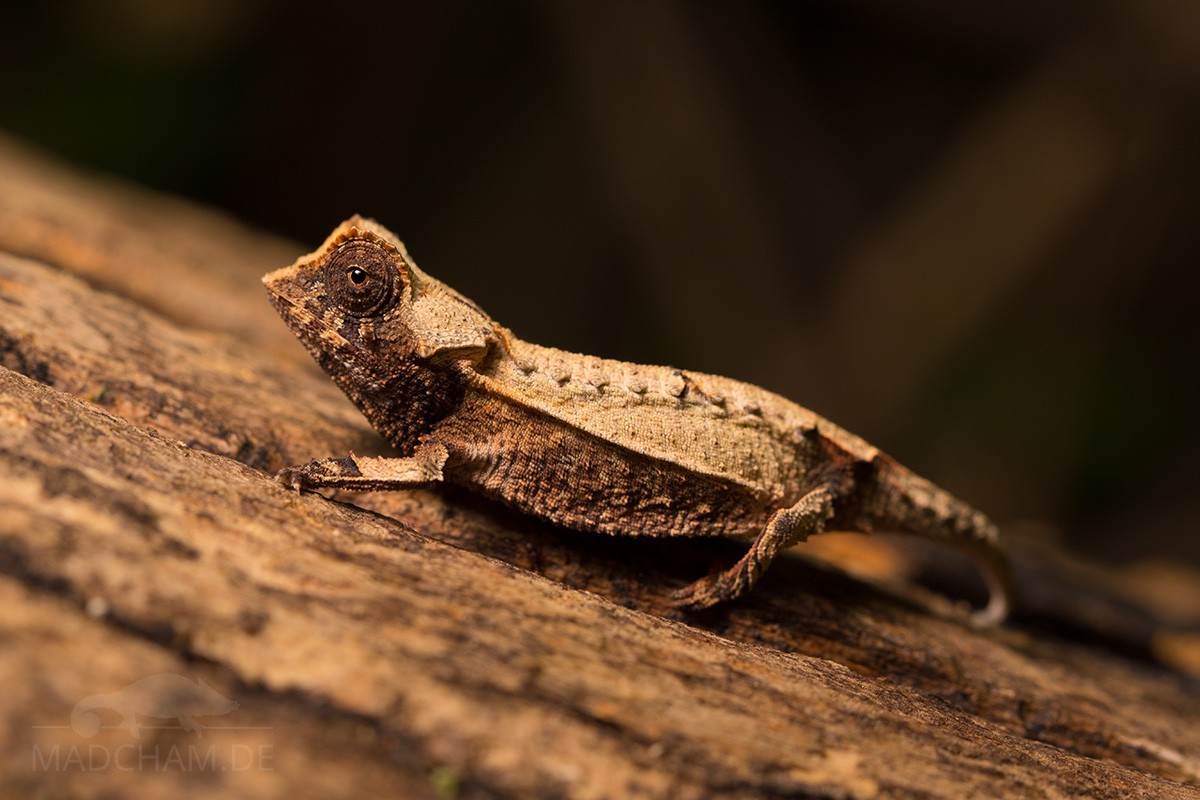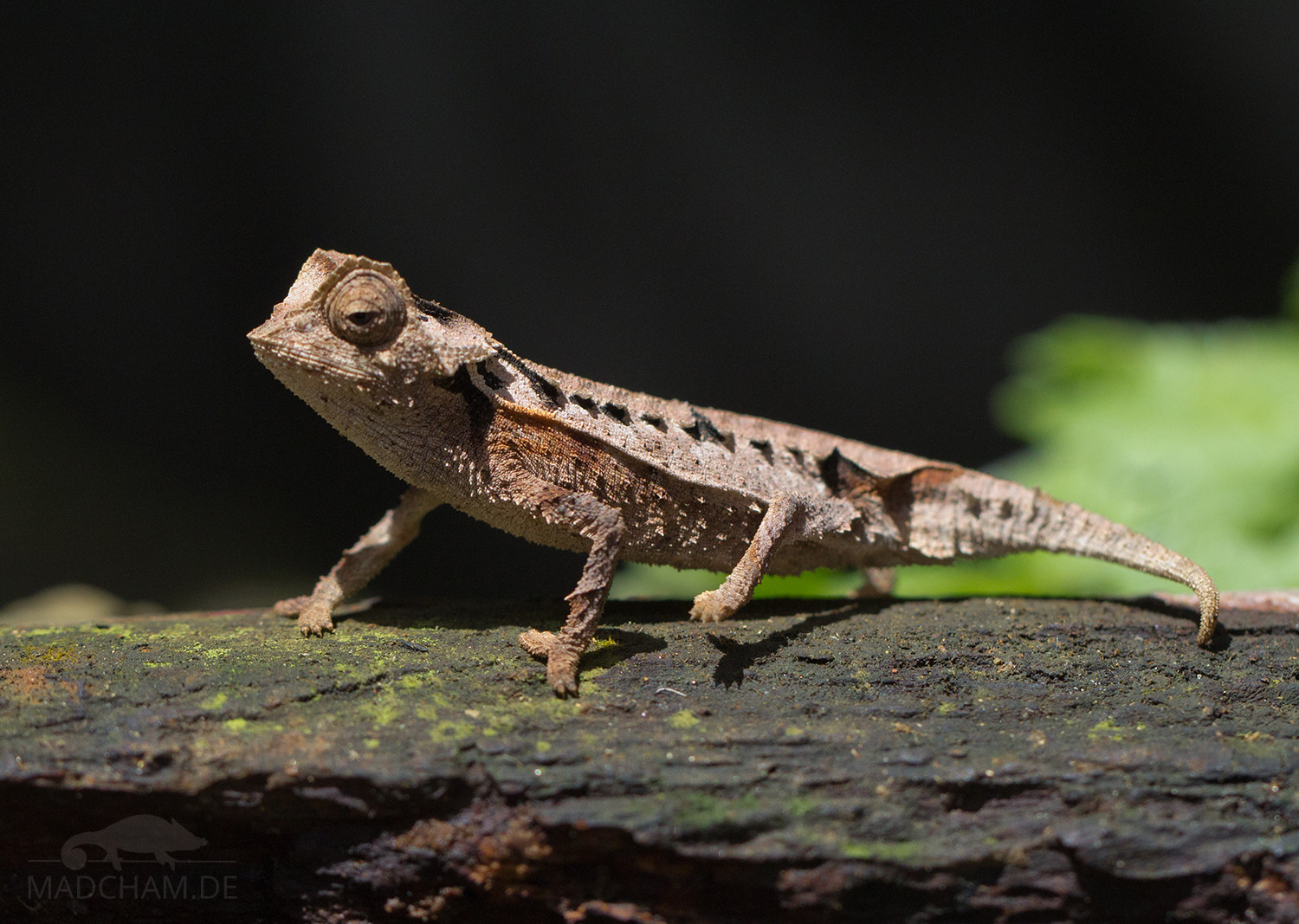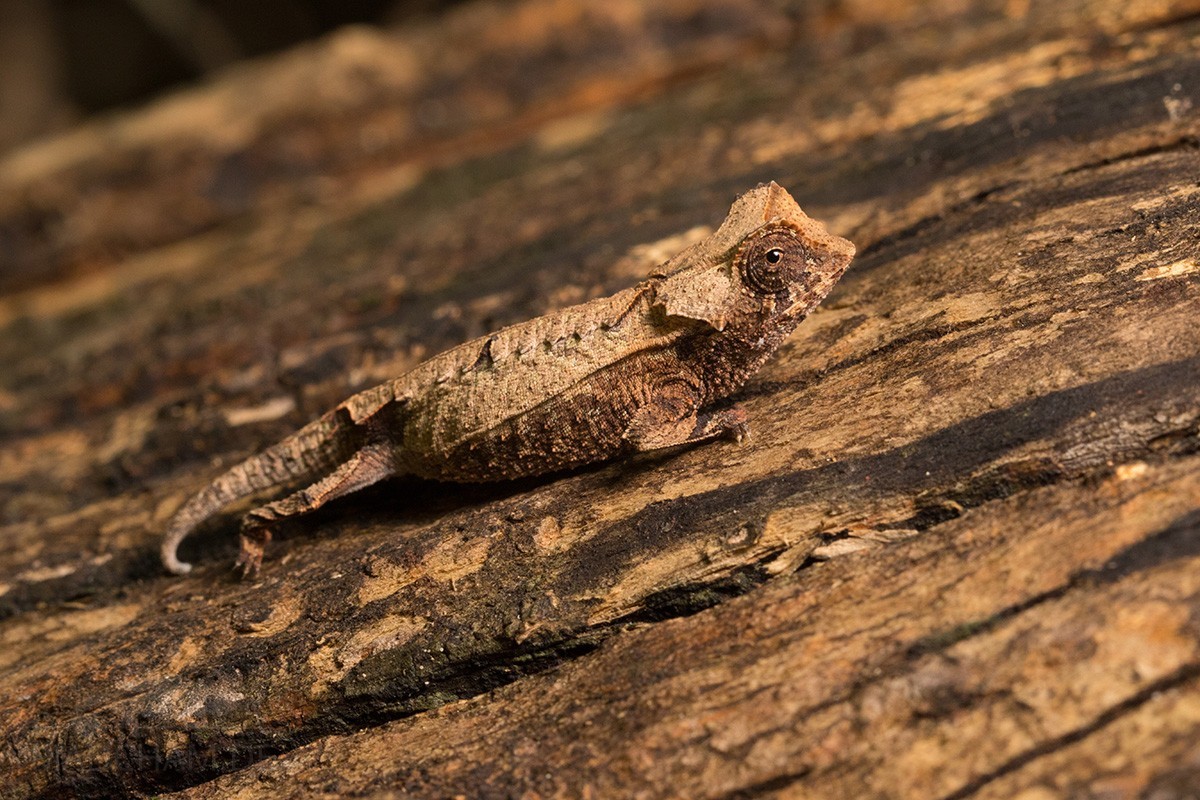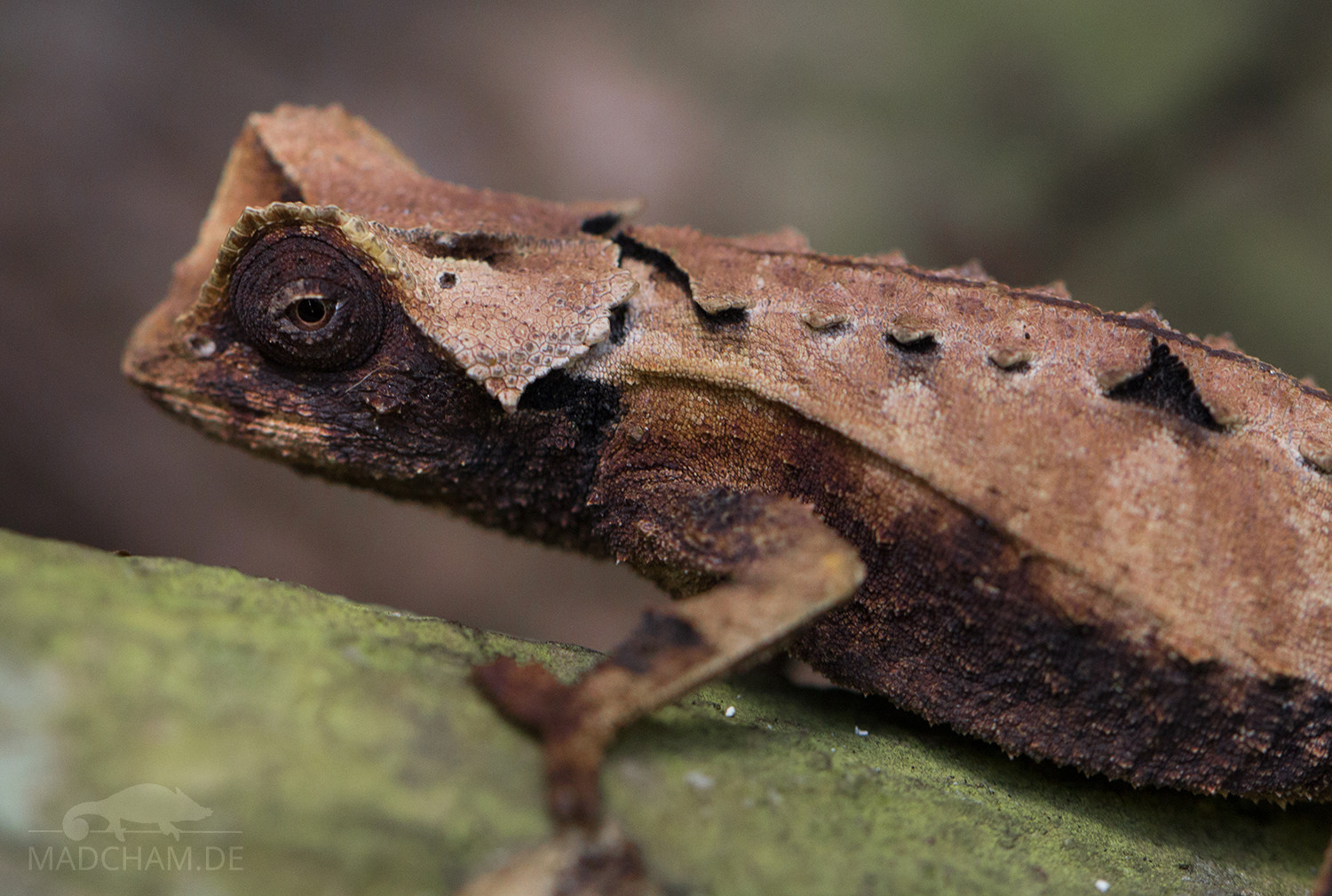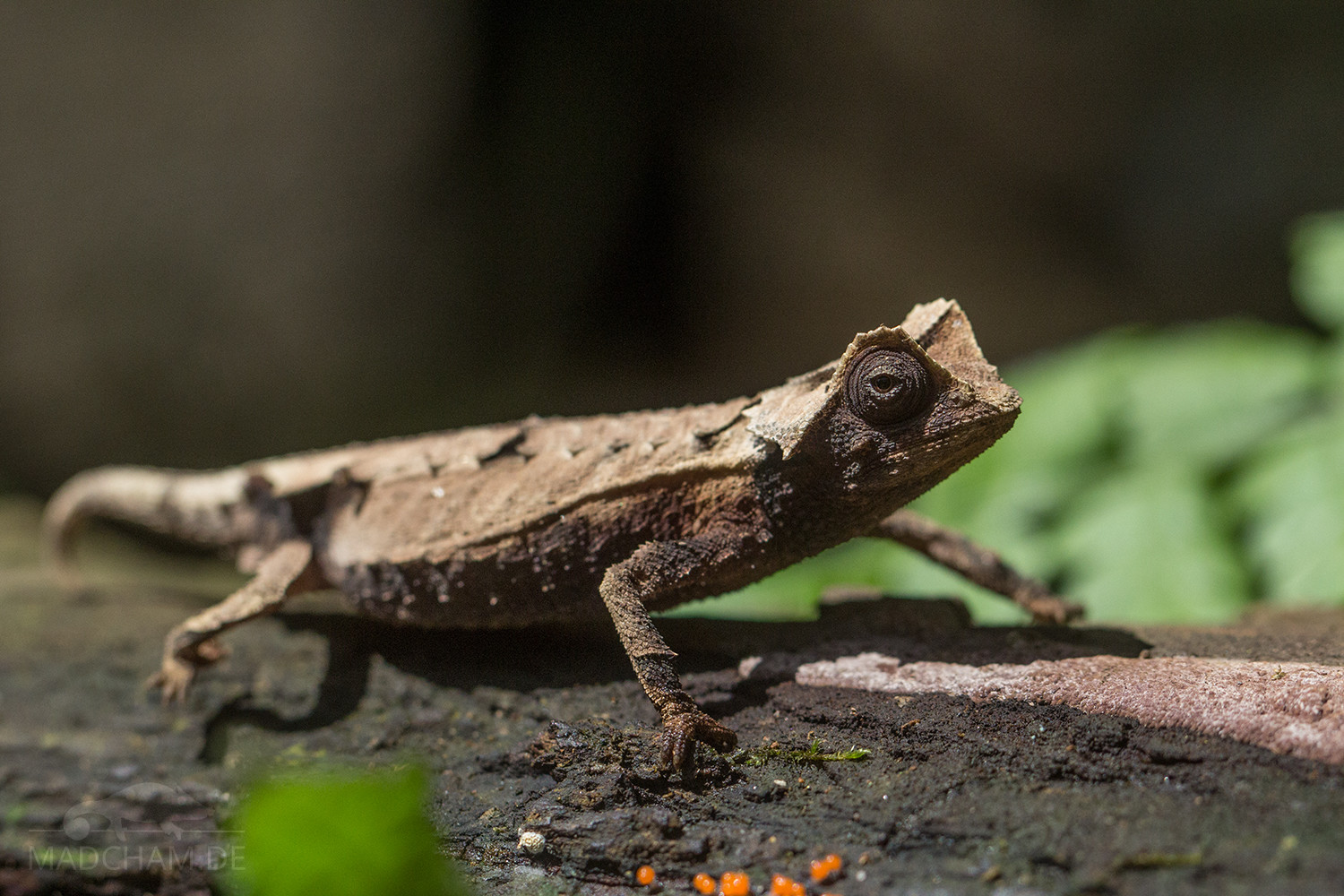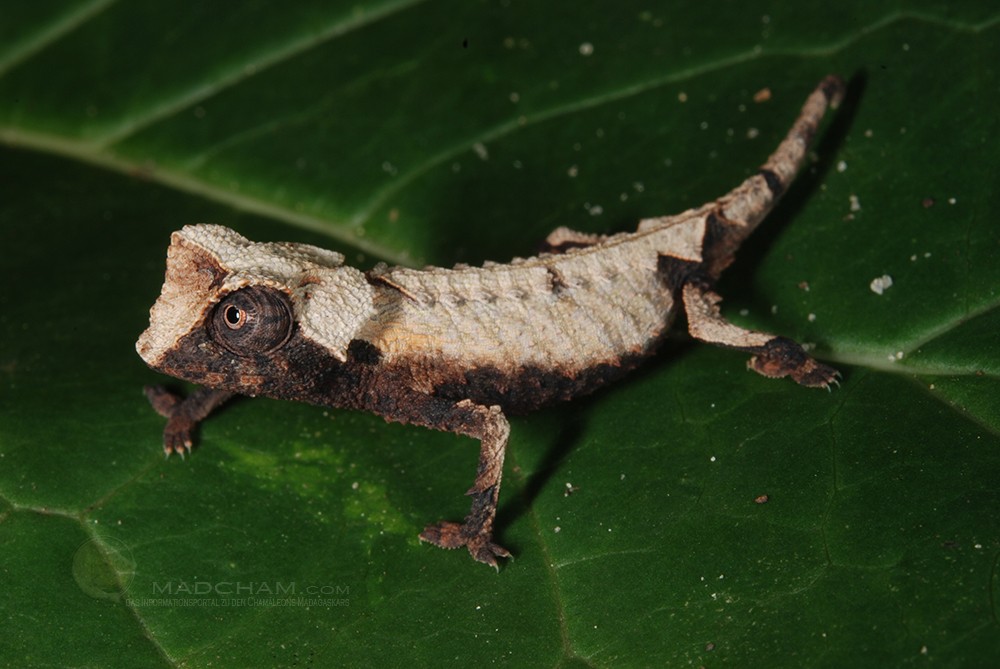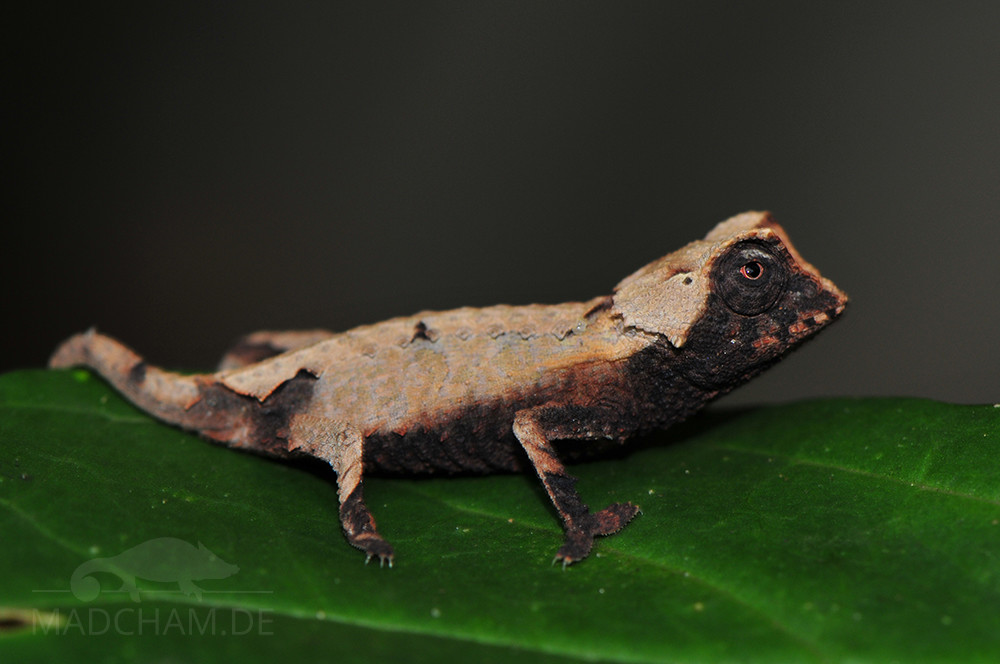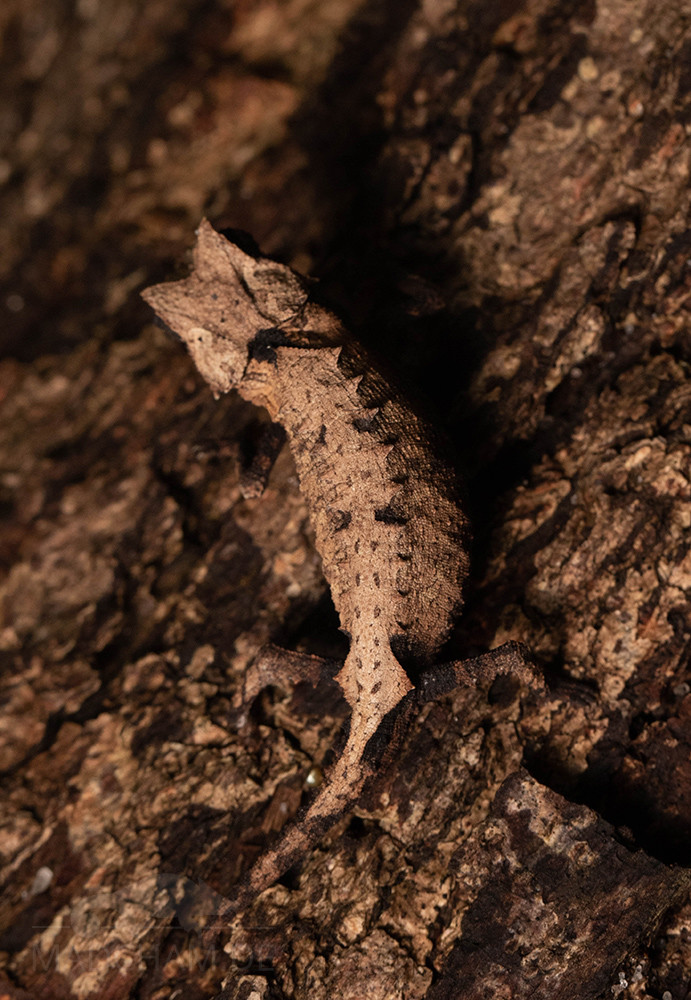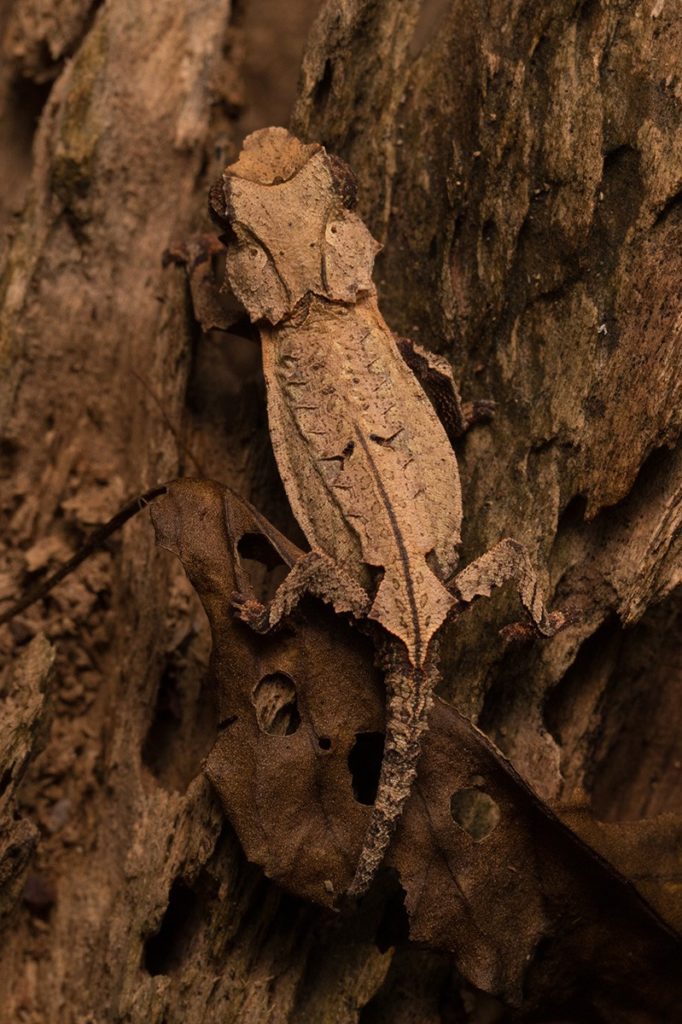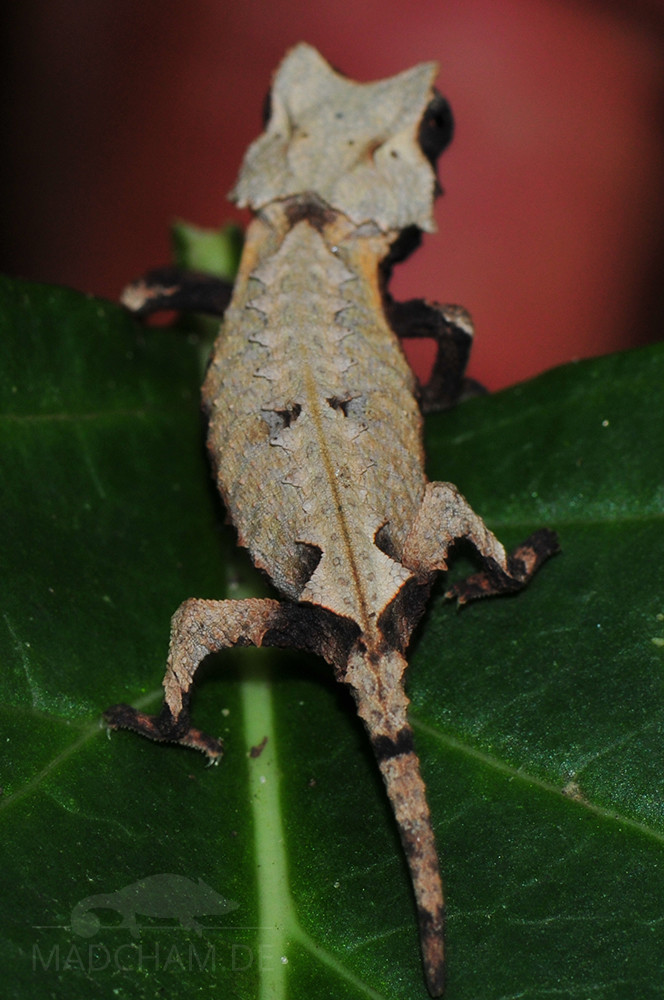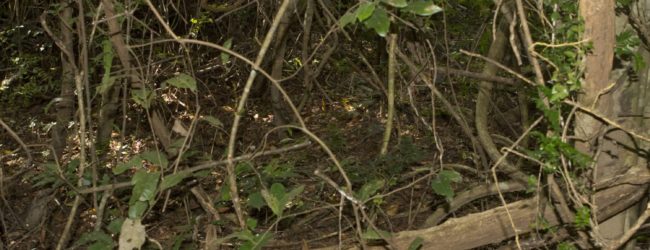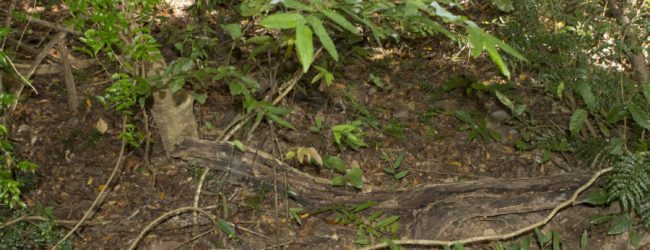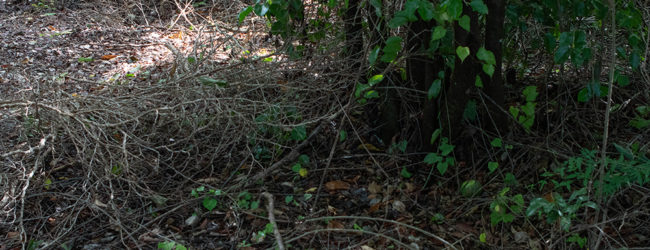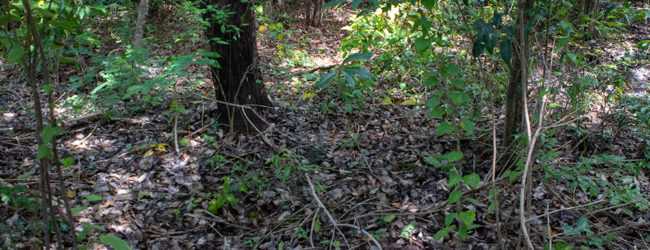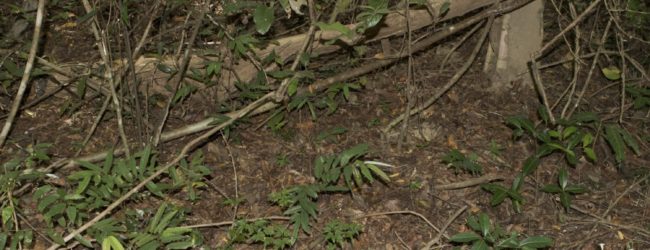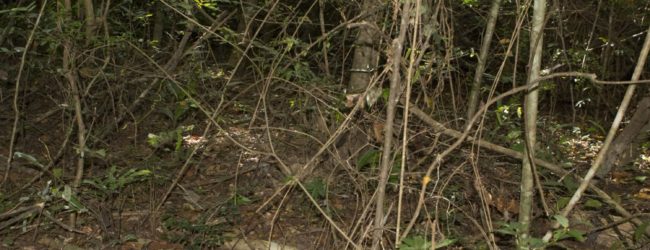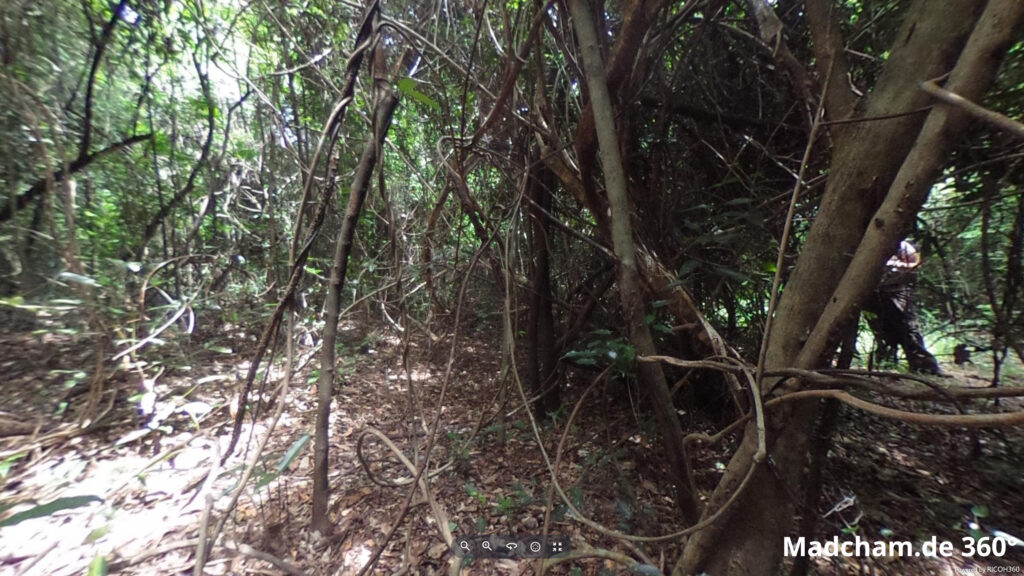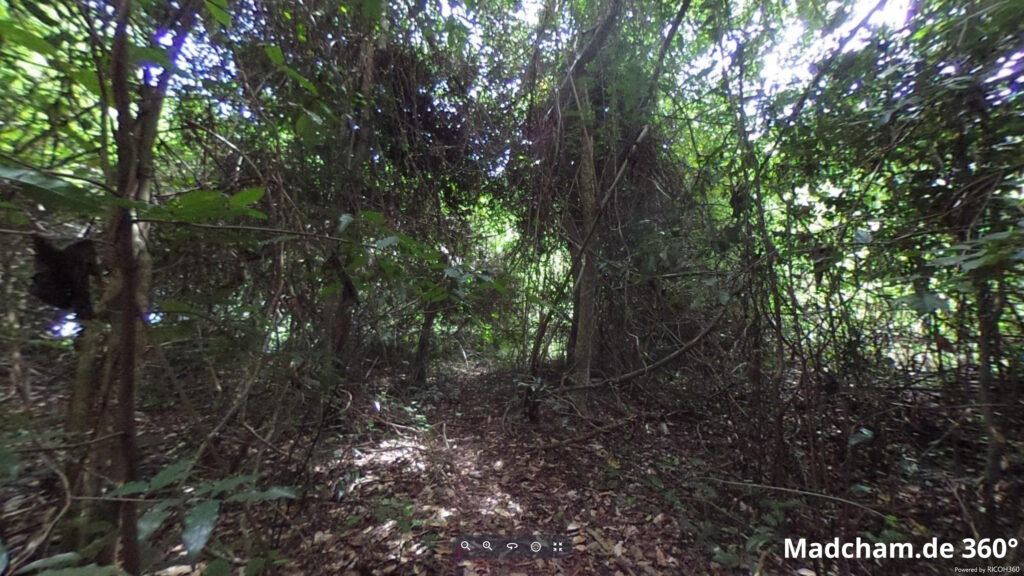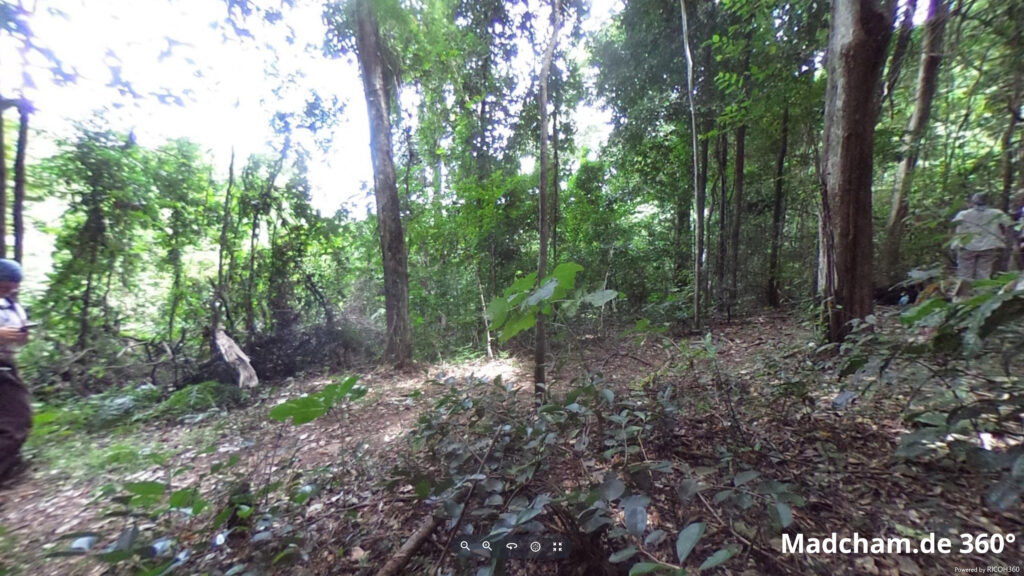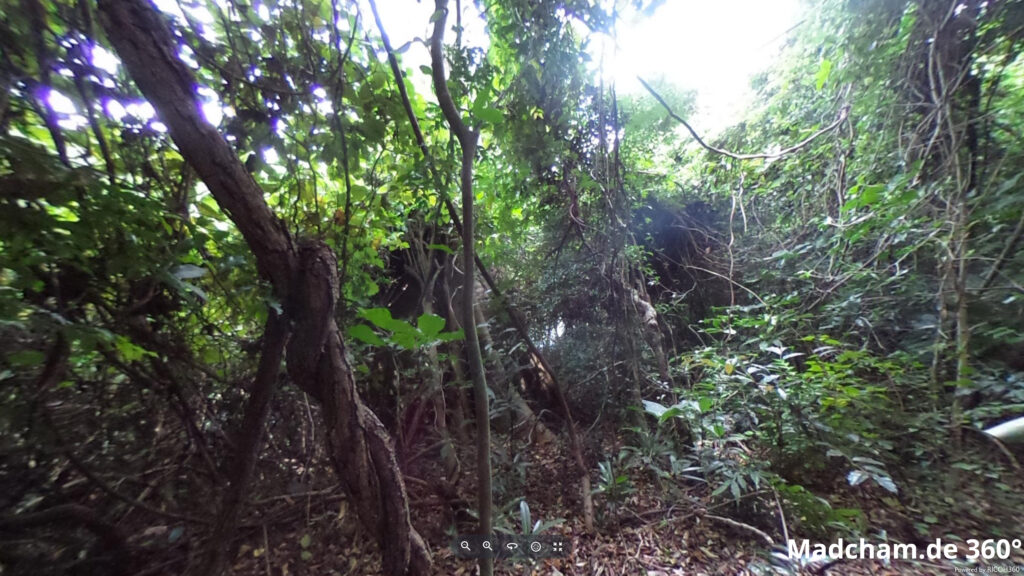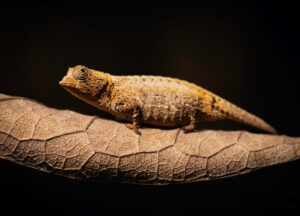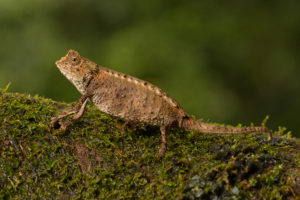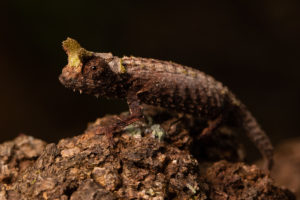no legal export possible
First description:
Angel, 1939
Origin of the species name:
Fernand Angel described this chameleon species on the basis of prepared animals that were kept in the Natural History Museum of Paris (France). The chameleons had originally been collected by the colonial official Raymond Decary in Madagascar in 1938. Accordingly, Angel, who worked up Decary’s collected works in his function as an assistant taxidermist, named the species after the finder.
Distribution:
This leaf chameleon lives mainly in the dry forests of the Ankarafantsika National Park in northwest Madagascar. An additional, rather unknown distribution area is located in a small dry forest near Mahajanga on the west coast. Between these two distribution areas, there is hardly any intact forest left, so it seems very likely that the populations never meet. Between foliage and bushes you have to search a bit to find the small chameleons – they hide perfectly and are really difficult to find during the day. So far we have found them from time to time around Lake Ravelobe in Ankarafantsika and in a private forest near Mahajanga.
Appearance & size:
Among leaf chameleons, Brookesia decaryi is one of the larger species with an 8 cm total length. Compared to the body, the tail is relatively small and begins behind a well developed pelvic shield. Along the back, there is one row of ten spiny scales on each side that are continued on half of the tail. Typically in male Brookesia decaryi, when you look at the animals from above, you can see a “division” of the back into a front and a rear part, which is then followed by the pelvic shield. Around the cloaca, this species has enlarged scales. Most Brookesia decaryi wear light beige colors on the upper body, while the belly, throat, eyes, and legs are dark-colored. Some have a dark line along the back.
| Jan | Feb | Mar | Apr | May | Jun | Jul | Aug | Sep | Oct | Nov | Dec | |
| Average temperature | 27 | 27 | 27 | 27 | 26 | 24 | 23 | 24 | 25 | 26 | 27 | 27 |
| Minimum temperature | 23 | 23 | 23 | 22 | 20 | 18 | 17 | 18 | 19 | 21 | 22 | 23 |
| Maximum temperature | 31 | 31 | 31 | 32 | 31 | 30 | 30 | 30 | 31 | 32 | 31 | 31 |
| Rain days | 25 | 24 | 19 | 8 | 4 | 4 | 6 | 6 | 4 | 6 | 12 | 21 |
We have collected the data given above over several years with thermometers and hygrometers at the finding places of the chameleons. "Average temperature" means that values of a whole month have been calculated to one average value per month. For example all measured minimum temperature values of February have been calculated to one average minimum temperature for February. In plain language, this means single peak values of a day may be a little higher or lower than the average minimum and maximum temperatures. It is possible that a location has an average maximum temperature of 29°C, but one day during that month it had 33°C or even 35°C there.
Several examples of daily temperatures in Ankarafantsika during the rainy season can be found below. They were recorded with data loggers in 2024.
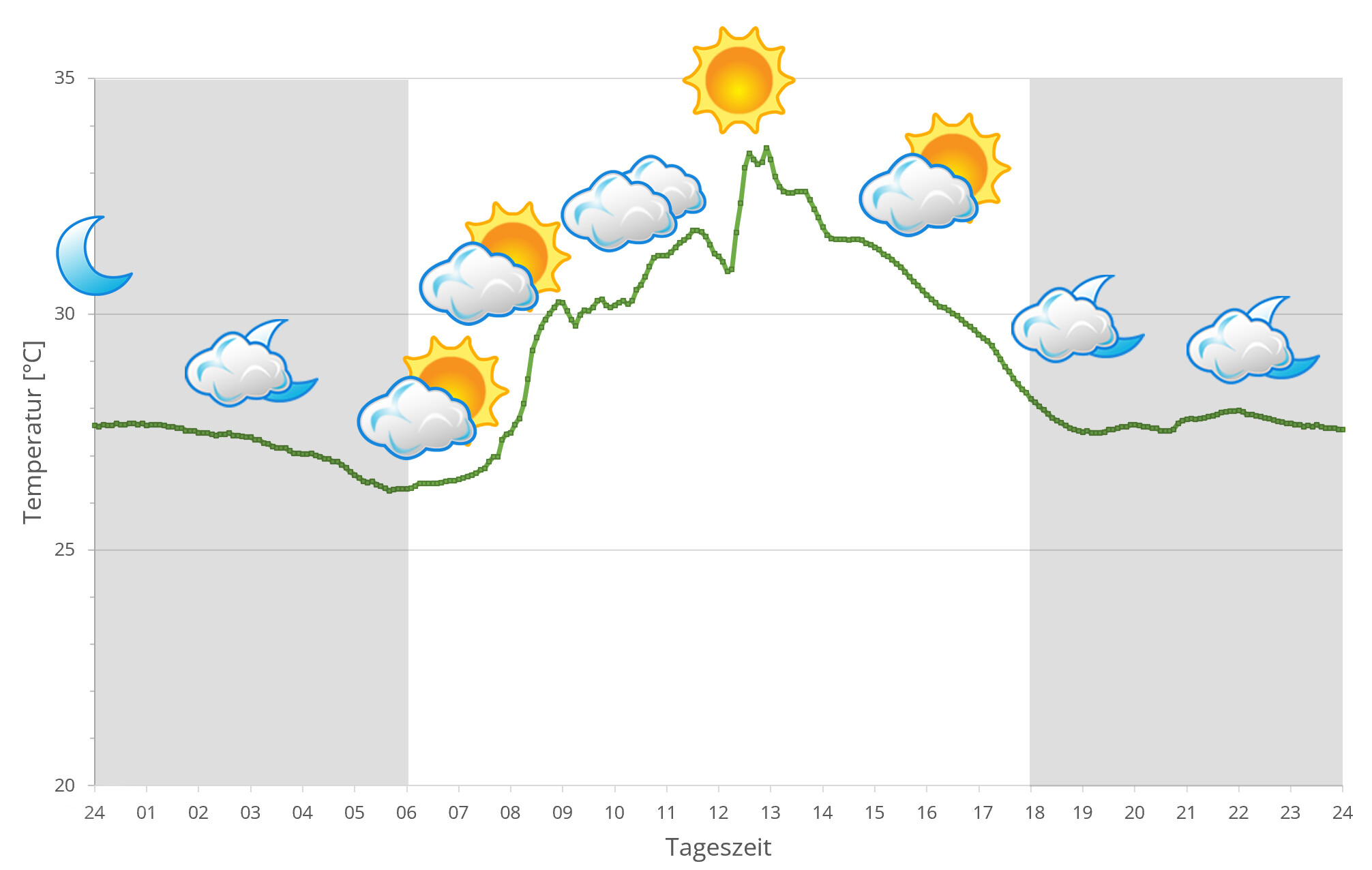
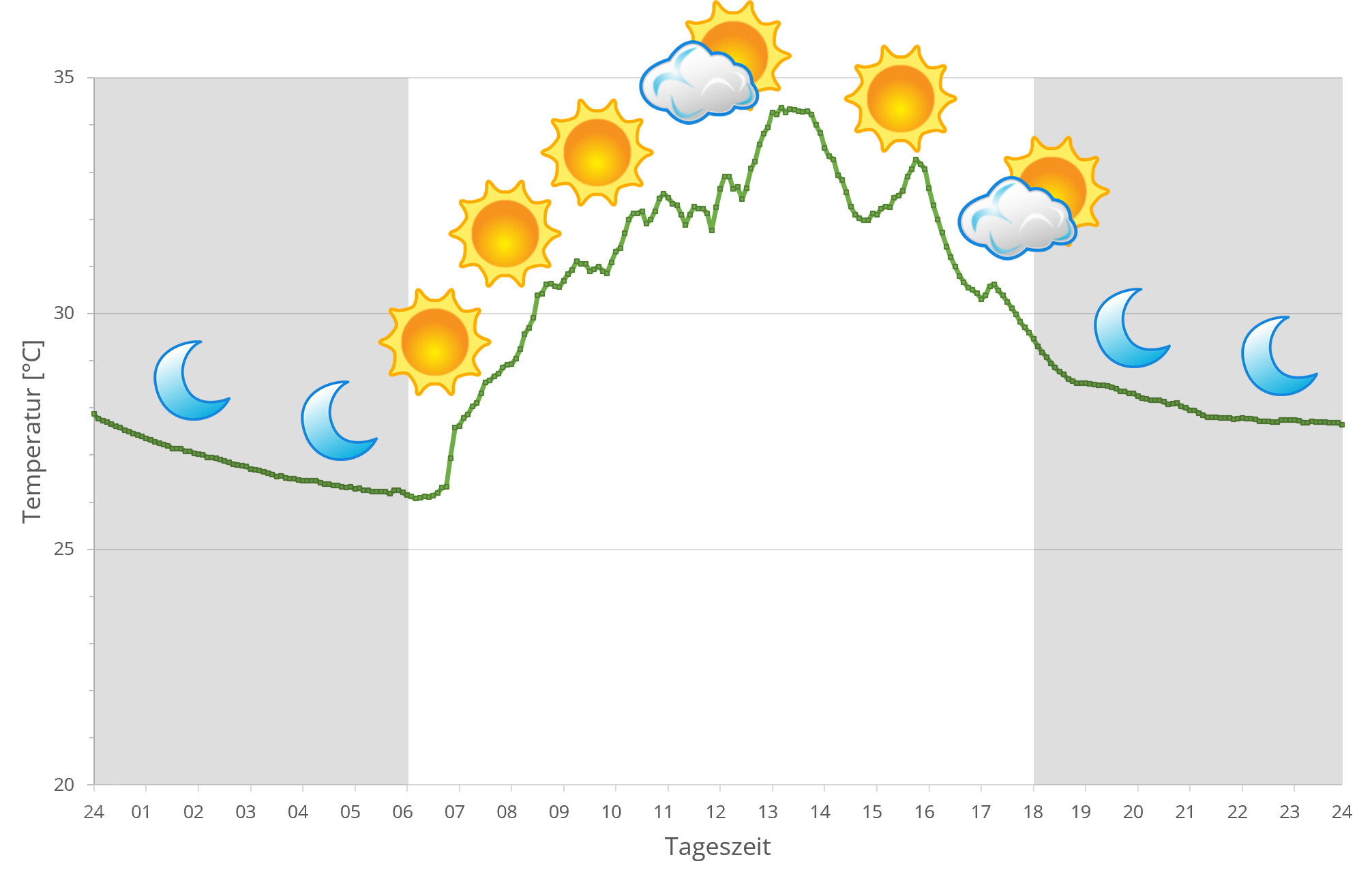
Climate in Ankarafantsika is hot and dry during most time of the year. Temperatures above 30°C during daytime are usual. Rainy season is rather short and only covers November until March. In this time, it is raining a lot and the whole forest blooms.
In April, the rainy season is over and precipitation is only measured few days per month. Many trees lose their leaves. There is morning dew and occasionally some rainfall, but that's it. During daytime, temperatures are a little lower than in rainy season, but temperatures still easily reach 25°C. At night, temperatures drop some degrees.
In 2024, we used data loggers to measure the relative humidity on several days in Masoala during the rainy season, the data can be found below.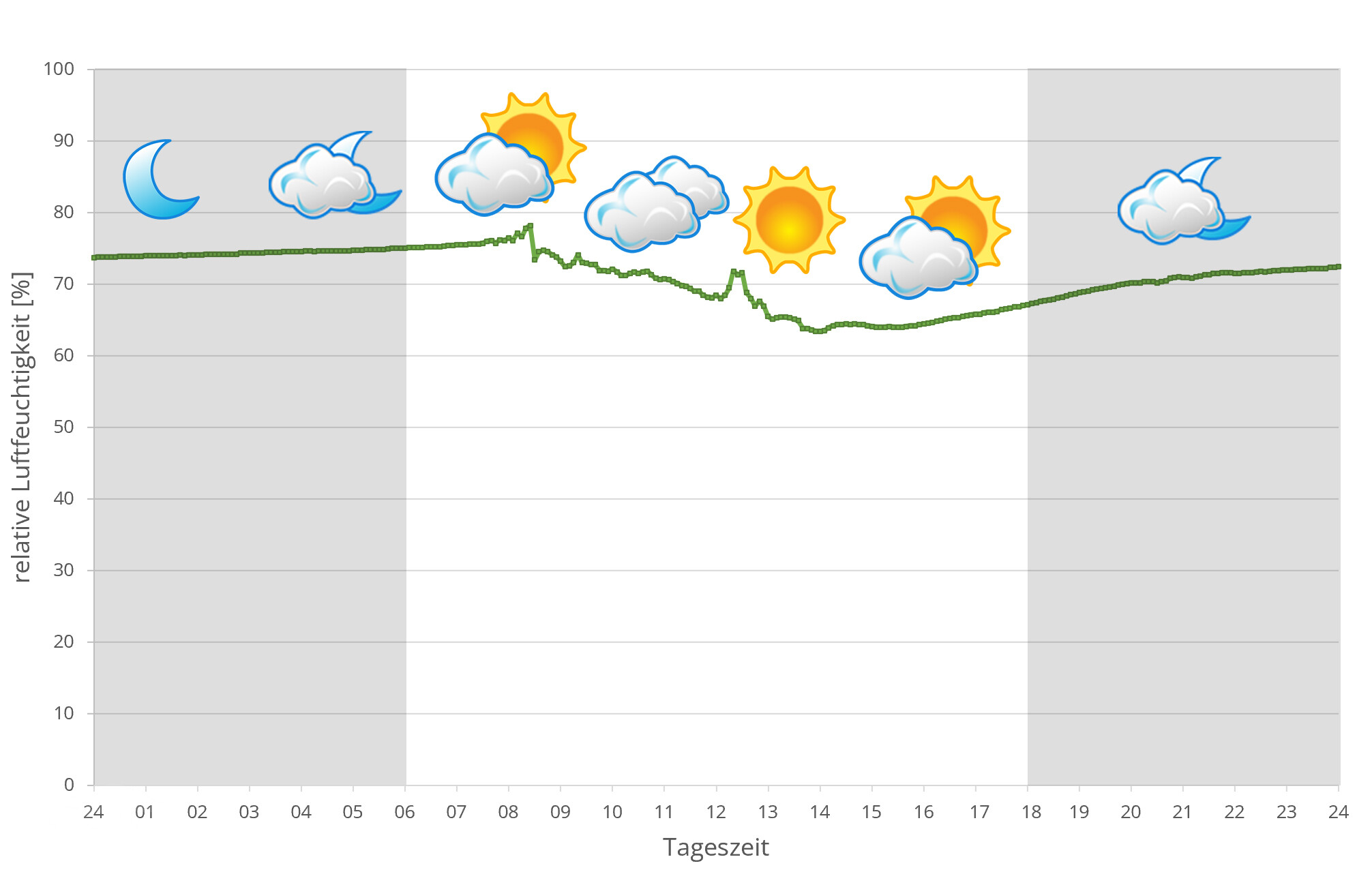
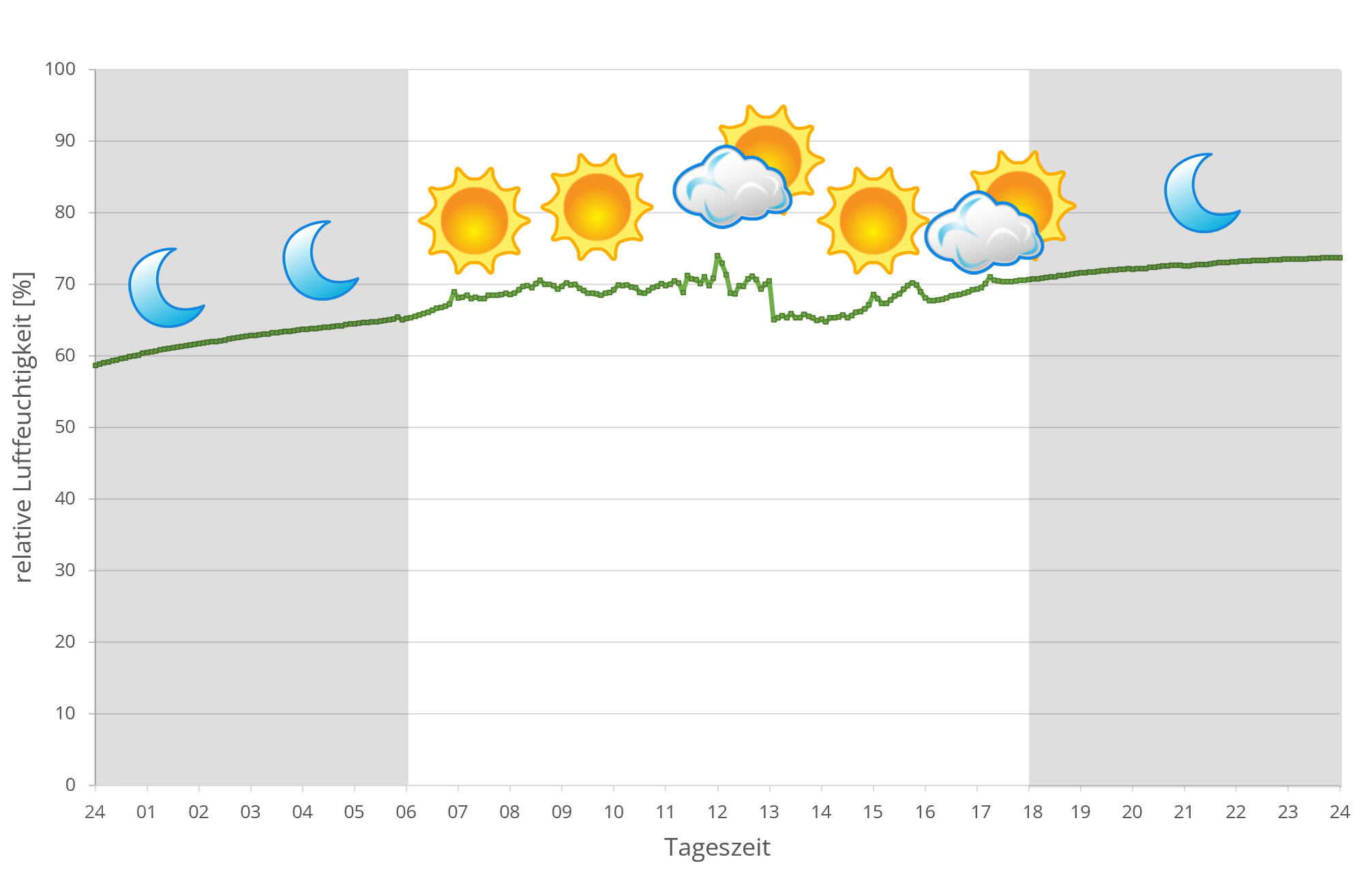
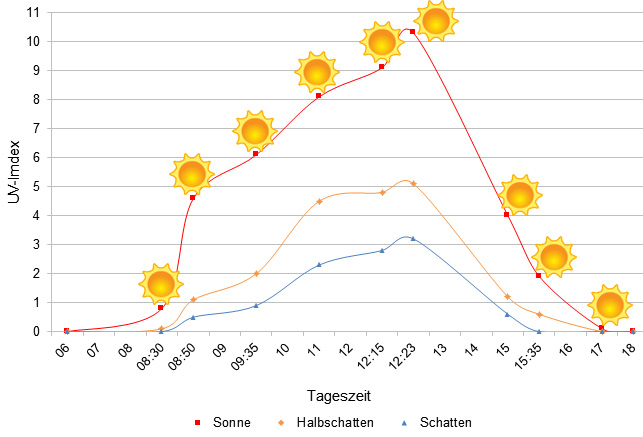 Tageszeit = day time, Sonne = sun, Halbschatten = half shade, Schatten = shade
Tageszeit = day time, Sonne = sun, Halbschatten = half shade, Schatten = shade
We have measured UVB data with a Solarmeter 6.5 in spring (beginning of April) at the peak of activity of chameleons in Madagascar. We always measured the values that a chameleon could maximally reach in its habitat.
| Jan | Feb | March | Apr | May | Jun | Jul | Aug | Sep | Oct | Nov | Dec | |
| Morning | 24.9 | 26.1 | 25.6 | 24.2 | 22.6 | 19.2 | 18.4 | 19.5 | 22.3 | 21.8 | 22.9 | 22.7 |
| Midday | 28.2 | 28.7 | 26.9 | 26.1 | 25.6 | 25.8 | 25.8 | 26.5 | 31.7 | 28.8 | 28.6 | 28.5 |
| Afternoon | 28.3 | 28.1 | 27.2 | 26.1 | 26.1 | 25.3 | 25.5 | 26.8 | 30.8 | 28.5 | 28.1 | 27.8 |
| Night | 24.5 | 26.1 | 25.3 | 21.7 | 19.8 | 17.9 | 18.7 | 20.2 | 24.2 | 23.5 | 23.3 | 23.5 |
Between 01 April 2018 and 17 March 2019, we measured ground temperatures in the dry forest of Ankarafantsika daily - the table is the result of these measurements. A detailed discussion can be found here. In total, we made 1396 ground temperature measurements and measured an estimated 300 different locations in Ankarafantsika. The following graphs show the soil temperature profiles in Ankarafantsika at a depth of 20 cm in the wet season (February, left) and in the dry season (June, right):
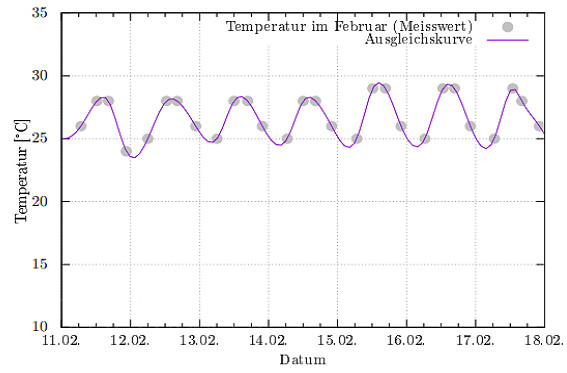
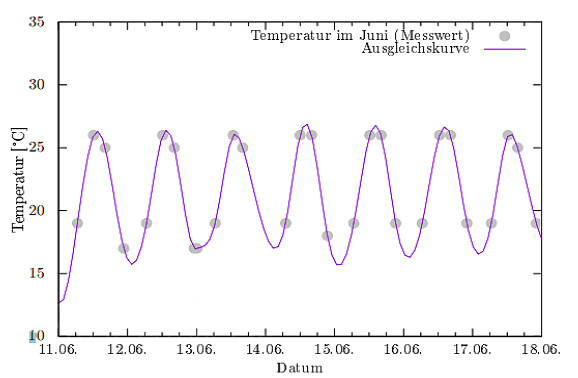
In 2024, we additionally to other climate data measured air pressure at the places we visited in Madagascar. The following data is from several days during the rainy season in Ankarafantsika. On the X-axis is the time of day or night. In Madagascar, the day begins at around 6 a.m. and night falls at 6 p.m. The Y-axis shows the atmospheric pressure in hPa.
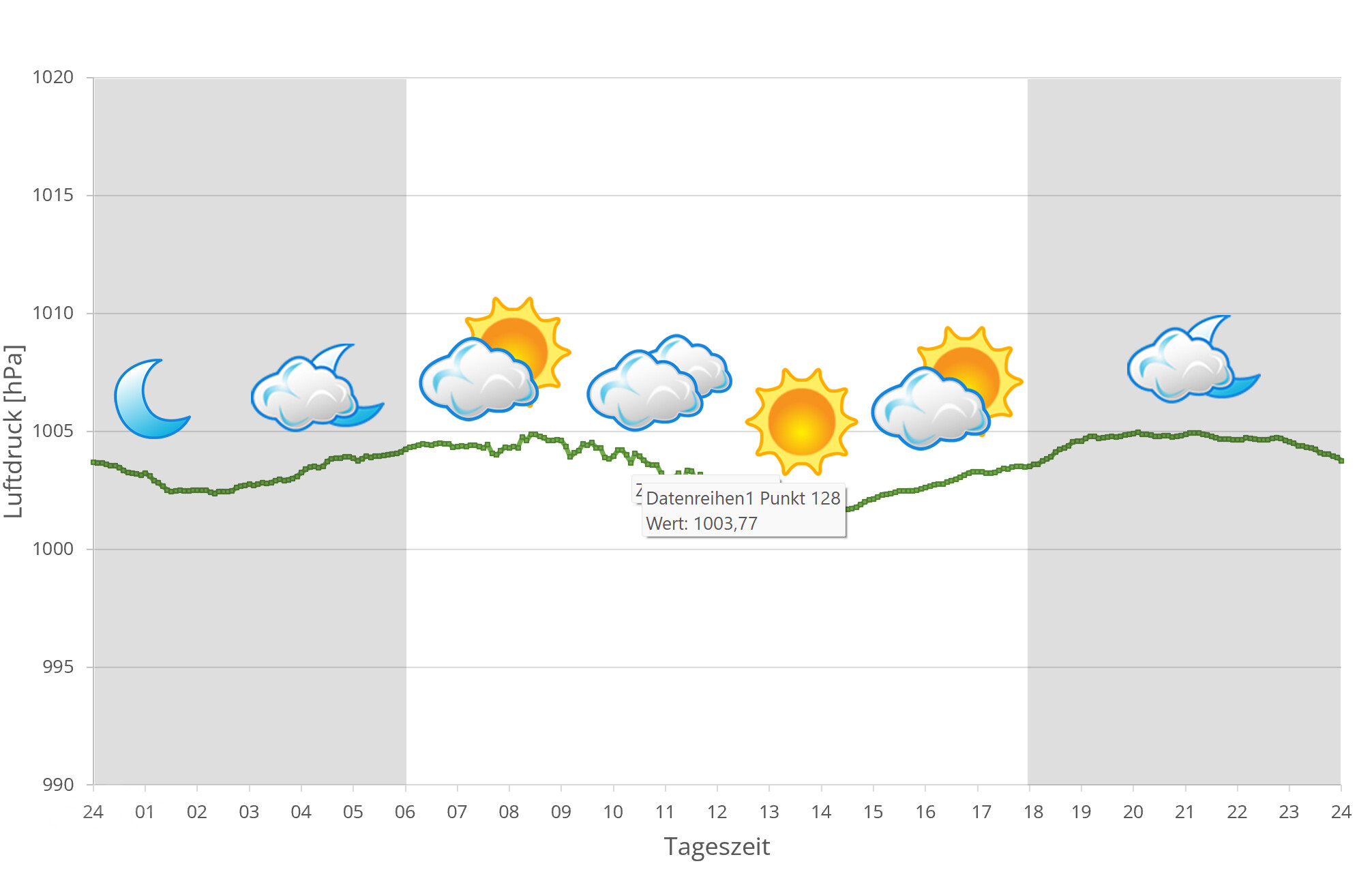
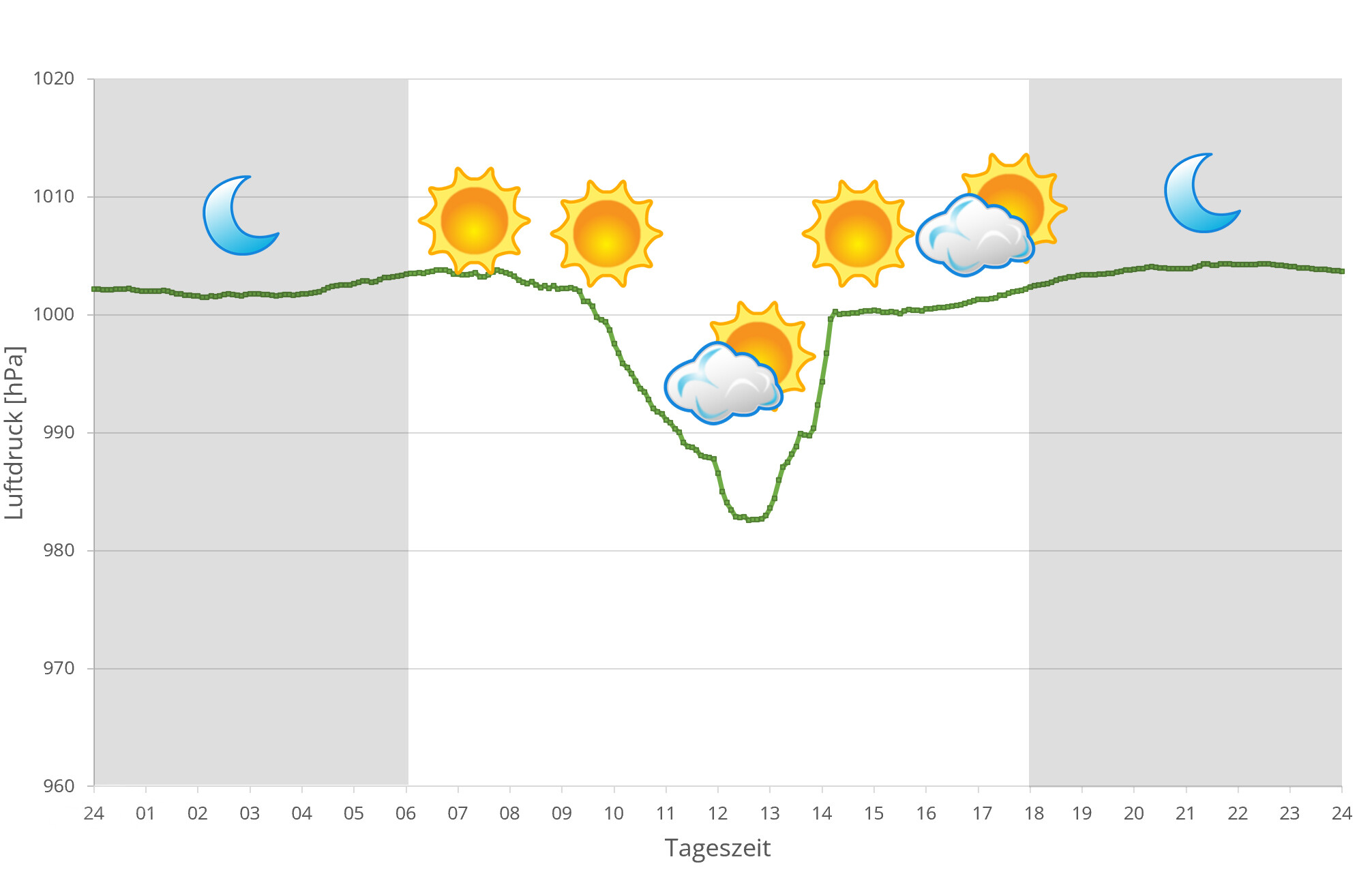
| Jan | Feb | Mar | Avr | May | Jun | Jul | Aug | Sep | Oct | Nov | Dec | |
| Average temperature | 27 | 28 | 28 | 28 | 27 | 26 | 25 | 26 | 27 | 28 | 29 | 28 |
| Minimum temperature | 24 | 24 | 24 | 24 | 22 | 20 | 20 | 20 | 21 | 23 | 24 | 24 |
| Maximum temperature | 31 | 31 | 32 | 33 | 32 | 31 | 30 | 31 | 32 | 33 | 33 | 32 |
| Rain days | 26 | 23 | 26 | 17 | 3 | 2 | 1 | 1 | 2 | 14 | 21 | 25 |
The given data were measured and compiled by us within several years with thermo- and hygrometers directly at the finding places of the animals. "Average temperature" means that the values of an entire month were calculated to an average value, e.g. all measured minimum values of February were calculated to an average minimum value for February. This means in plain language that individual peak values of a day can be significantly higher or lower than the average minimum and maximum values. Thus, it is possible that although the average maximum is 29 degrees, it was 33°C or even 35°C warm on some days of the month.
The climate in Mahajanga is one thing above all: incredibly hot. You are actually always sweating, even if you do not move at all. Temperatures above 30°C are the rule during the day. At night, the temperatures during the rainy season only fall just below 25°C. But in the dry season this changes massively: then it gets really cold at night with temperatures around 18°C. The difference to the day is extremely noticeable in the dry season in Mahajanga.
Mahajanga has only a short rainy season from November to March when everything is green and blooming. In some years the rainy season is even shorter. With the dry season it becomes more and more difficult for animals to find water in Mahajanga - rainy days are the exception until October. Sun and heat are in abundance every day. The climate makes high demands on chameleons that want to survive.
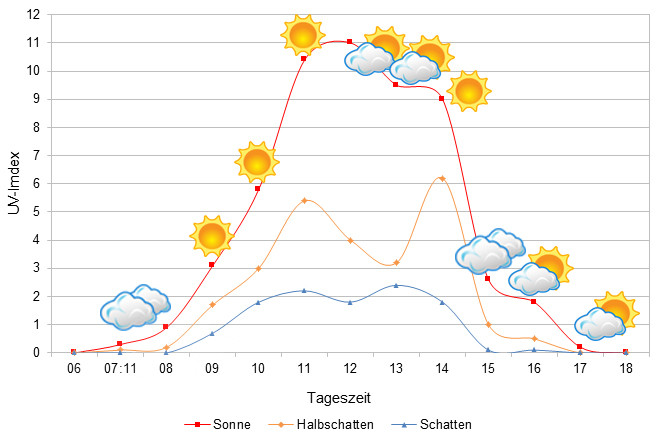
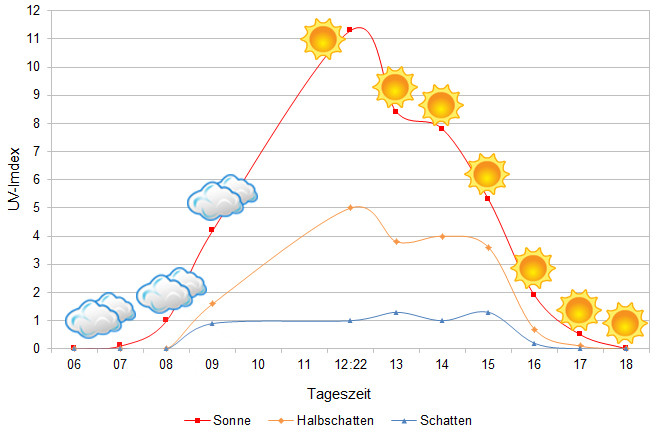
The UVB data were measured with a Solarmeter 6.5 in spring (March) at the highest activity time of the chameleons. The maximum values that could be achieved by the chameleon in the habitat were measured.
Habitat:
The following pictures show the habitat of Brookesia decaryi at the end of the rainy season in Ankarafantsika and Mahajanga. These animals occur in the thick foliage of certain parts of the dry forest. Low entwined shrubs with very small-leafed plants, pieces of bark, deadwood and small branches and twigs cover the soil, and there are many termite nests. Only during the rainy season, there are small green plants like those in the pictures – during the dry season, most of the plants are bare.

